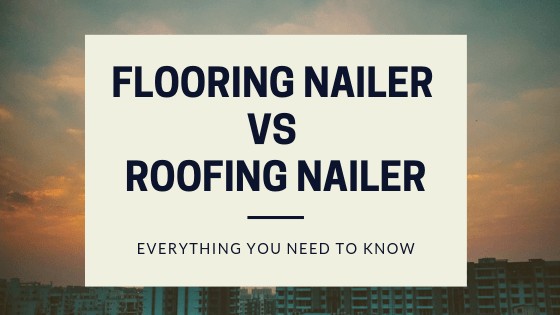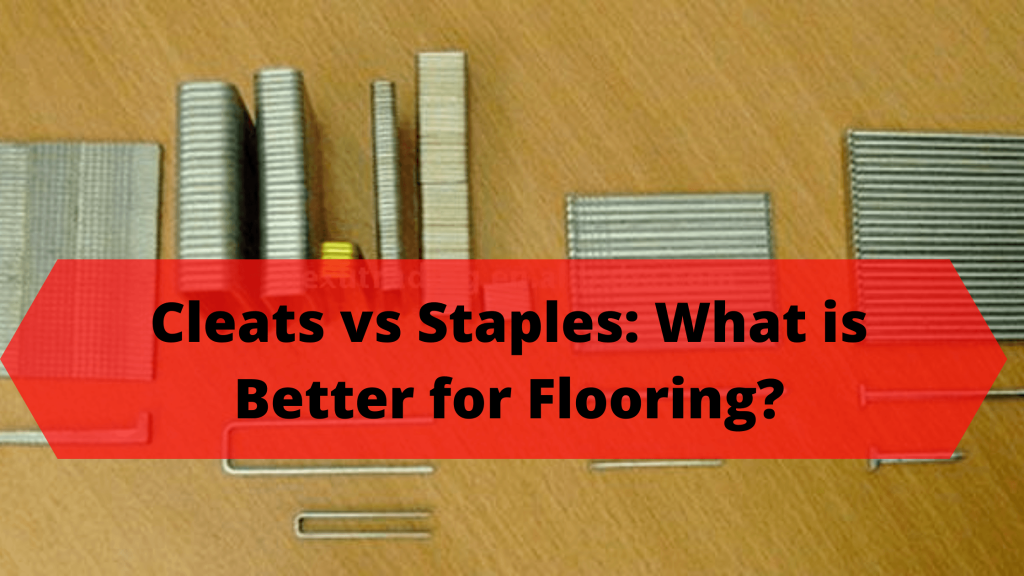Whether you’re planning on building or fixing up your own house or looking into expanding your carpentry services, you’ll find yourself looking at the different nail guns available today. While a lot of them seems to have identical or similar purposes, a lot of them are also designed for significantly different tasks.
Take the flooring nailers and roofing nailers for example. As their names alone would suggest, these two tools are meant to be used for very different parts of the home. However, you might still want to compare the two in order to get fully acquainted with your nail gun options.
How are they similar? How are they different from each other? Find out below.
What is a Flooring Nailer?
In terms of appearance, flooring nailers are the most unique among all of the nail guns available in the market today. It’s elongated as it’s meant to be used to dispense fasteners at a low height while the user is standing up. It definitely doesn’t look like what a typical nail gun looks like.
Flooring nailers are designed for the efficient installation of tongue and groove floorboards. This is why it has different angles and is handled differently.
There are also two kinds of flooring nailers, pneumatic and manual. Like other nail guns, the pneumatic variety is air powered. The manual type, however, relies on the user’s strength in order to nicely fasten the floorboards into the sub-flooring. This is why not all flooring nailers are considered as power tools.
What is a Roofing Nailer?
Roofing nailers, on the other hand, are the nail guns used for attaching shingles, tar paper, and insulation boards to the roof. They’re heavy-duty power tools that are most commonly used by professional contractors. However, DIYers can also find them handy to have around, especially if they live in areas that frequently experience inclement weather.
Since roofing materials require to be watertight, roofing nailers work in a specific manner that provides hold without tearing through them. They’re also meant to work fast as roofs are often composed of hundreds of shingles.
You can find roofing nailers in these three varieties:
- Air powered or pneumatic roofing nailers require an air compressor to work. They’re the most popular types in the market today.
- Spring-loaded roofing nailers, as the name suggests, use springs to dispense nails into the roofing material.
- Solenoid roofing nailers use electromagnetism to dispense nails and fasten the roofing materials to their base.
Roofing Nailer vs Flooring Nailer: Similarities and Differences
As the descriptions above would’ve suggested, roofing nailers and flooring nailers are two very different types of nail guns.
They’re used for various purposes.
Obviously, flooring nailers and roofing nailers are used for different purposes. Their names say so and their designs also say a lot about the difference. You really cannot confuse the two because of how different they look.
Their different handling is also something that will prevent you from even attempting to swap them out. It’s safe to say that roofing nailers can prove to be too much for floorboards while flooring nailers would be very unsafe to use on the roof.
Both tools can’t be used for other applications aside from the ones they’re specifically made for.
As the previous point may have already clued you in on, these two nail guns also have very specific uses. You can’t swap them for out for each other or even use the two for other fastening purposes.
This isn’t exactly a problem for flooring nailers as they’re really handled differently from other nail guns. However, some folks might feel tempted to do such with the roofing nailer.
Check our top picks for install fences.
With its speedy performance, high-powered nail delivery, and efficient nail-carrying design, lots of people might be curious whether they can repurpose roofing nailers. You might not want to try this, though. Roofing nailers are made to fasten heavy-duty materials to each other so it might not provide a great result when used in wood or other materials.
Roofing nail guns can require less effort to use.
Flooring nail guns, even the pneumatic types, will still require you to strike the ram head to dispense nails and attach the floorboards to the sub-flooring. This means that you still need to exert a good amount of physical effort in order to use it fully.
Roofing nailers, on the other hand, often work by just pulling the trigger. This makes them a lot simpler to operate.
Learn More About Crown Stapler vs Brad Nailer
Both are usually used by professional contractors.
Many homeowners might find themselves interested in buying their own roofing and flooring nailers since they can make replacing floorboards and shingles sound so easy. However, as they can’t really be used for other purposes, you might want to reconsider this interest.
Unless you’re interested in offering roofing and flooring services, you might want to consider an important point about these products. They can’t be used for other purposes so they might be left sitting in your shed or garage for a long time after its initial use.
As it’s not likely that you’ll replace your floorboards or shingles in their entirety every year or so, you might not really need to own these two tools. You can, of course, buy and then sell later, but renting them might be a more convenient option.
Conclusion
Roofing and flooring nailers are two of the most useful fastening tools for homebuilding. They can definitely make the trickiest parts of constructing a house way simpler. While it’s not necessary for everyone to own these tools, they can come in handy for those who really need them.
Related Posts:
Finish Nailer vs Framing Nailer: Get The Differences
Coil Framing Nailer vs Stick Nailer: Which One to Choose?
Roofing Nailer vs Siding Nailer : Which One Do You Need?
Angled vs Straight Finish Nailer: Which One Do You Need?
Senco vs Paslode Framing Nailer: Check The Differences

 April 23, 2019
April 23, 2019  6 Min
6 Min  No Comment
No Comment 




















